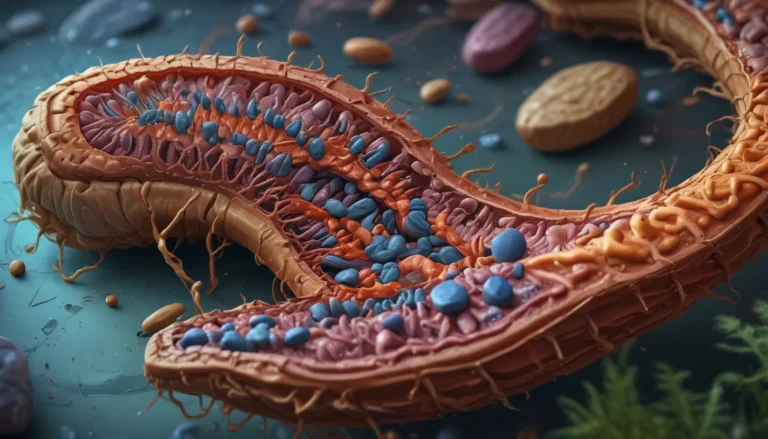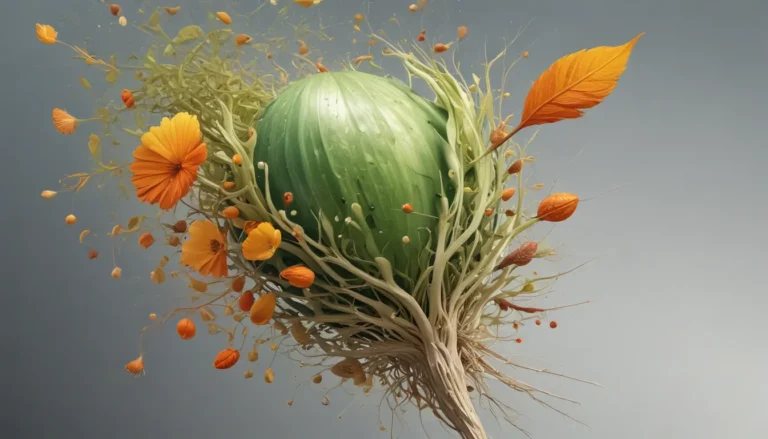A Note About Images: The images used in our articles are for illustration purposes only and may not exactly match the content. They are meant to engage readers, but the text should be relied upon for accurate information.
Welcome to the enchanting world of community ecology, where every organism plays a vital role in shaping and maintaining the balance of nature. In this article, we will explore 20 extraordinary facts about community ecology that will leave you in awe of the complexity and diversity of life on our planet. From mutualism to keystone species and trophic levels, get ready to delve into the captivating field that studies the interactions between species within ecosystems.
Unraveling the Interactions in Communities
Community ecology focuses on the relationships and interactions between different species in an ecosystem. It delves into how species coexist, compete, and depend on each other for resources. By understanding these interactions, we can gain insight into how communities are shaped and maintained in the natural world.
The Significance of Biodiversity in Community Dynamics
Biodiversity plays a crucial role in community ecology. The higher the biodiversity in a community, the more stable and resilient it is to environmental disturbances. A diverse community can better adapt to changes and provide essential ecosystem services that benefit us all.
The Impact of Keystone Species
Some species, known as keystone species, have a disproportionate impact on community structure. They exert control over the abundance and distribution of other species, shaping the entire ecosystem. By studying keystone species, we can better understand how communities are organized and maintained.
Mutualism: A Symbiotic Relationship
Mutualism is a key ecological relationship in community ecology where both species involved benefit. Examples include pollination and clownfish living among the tentacles of sea anemones. These symbiotic interactions play a vital role in maintaining the balance of ecosystems.
Competition and Coexistence
Competition for resources is a driving force behind species interactions in communities. Inter and intra-specific competition occur when species compete for limited resources such as food, shelter, and mates. This competition can lead to adaptations and ecological niche differentiation, shaping the diversity of communities.
Predation and Herbivory: Essential Interactions
Predation and herbivory are essential ecological interactions in communities. Predators help regulate population sizes by consuming other organisms (prey), while herbivores play a key role in consuming plant material. These interactions maintain ecosystem balance and influence species composition within communities.
Succession: Shaping Community Dynamics
Succession is a process that shapes community dynamics over time. Primary and secondary succession describe the changes that occur in a community after a disturbance or colonization of a new area. This process affects the composition and structure of communities as they evolve and adapt.
Understanding Trophic Levels
Trophic levels depict the flow of energy within a community. From producers (plants) to primary consumers (herbivores) to secondary consumers (carnivores), trophic levels illustrate the transfer of energy in a food chain or web. This energy flow is essential for the functioning of ecosystems.
Exploring Ecological Niches
Ecological niches define species’ roles within a community. An ecological niche refers to the specific role and position a species occupies within its community, including interactions, resource requirements, and habitat preferences. Understanding ecological niches helps us comprehend how species coexist and interact within ecosystems.
The Impacts of Invasive Species
The presence of invasive species can disrupt community dynamics by outcompeting native species, altering food webs, and disrupting ecosystem functioning. Managing invasive species is crucial for preserving the balance and diversity of communities.
The Role of Community Ecology in Conservation
Community ecology plays a vital role in conservation efforts by understanding species interactions and dynamics. By developing effective conservation strategies, we can preserve biodiversity and protect ecosystems for future generations.
Unveiling Ecological Networks
Ecological networks depict the complex interactions within a community. Using network analysis, scientists can study the intricate connections and dependencies between species, revealing patterns and vulnerabilities of ecosystems. Understanding ecological networks helps us comprehend the inner workings of communities.
Building Resilience Through Redundancy
Communities can exhibit resilience to disturbances through redundancy. A community with redundant species performs better in the face of disruptions, as the loss of one species can be compensated by others playing similar roles. Redundancy enhances the stability and sustainability of communities.
Exploring Biotic Homogenization
Biotic homogenization occurs when communities become increasingly similar over time due to the dominance of generalist species and human activities such as habitat destruction. Understanding biotic homogenization helps us mitigate the loss of biodiversity and preserve unique ecosystems.
Impact on Nutrient Cycling
Community interactions can affect nutrient cycling in ecosystems by influencing nutrient availability and cycling. These interactions impact the overall productivity and functioning of ecosystems, emphasizing the importance of species interactions in maintaining ecosystem health.
Influence of Abiotic Factors
Abiotic factors such as temperature, rainfall, and soil composition play a significant role in shaping the composition and diversity of species within a community. Understanding how abiotic factors influence community structure helps us predict and manage ecosystem dynamics.
Exploring Ecotones
Ecotones are transition zones between different communities where distinct ecosystems overlap or transition into one another. These areas support unique species and facilitate interactions between different communities. Studying ecotones reveals the interconnectedness of diverse habitats.
Human Impacts on Community Ecology
Human activities can have profound impacts on community ecology through deforestation, pollution, climate change, and habitat fragmentation. Understanding these impacts helps us develop sustainable practices to protect and preserve natural ecosystems.
The Role of Community Ecology in Ecosystem Stability
Community ecology provides insights into ecosystem stability and resilience by studying species interactions and dynamics. Understanding how ecosystems respond to disturbances helps us develop strategies to maintain ecosystem functionality and health.
Safeguarding Ecosystem Services Through Community Ecology
Ecosystem services such as pollination, water filtration, and carbon sequestration rely on intact and functional communities. Community ecology helps identify the key species and interactions driving these essential services, emphasizing the importance of preserving biodiversity for ecosystem health.
Conclusion: Embracing the Complexity of Nature
Community ecology offers a window into the intricate relationships that shape our natural world. By unraveling the mysteries of species interactions, researchers and conservationists can develop strategies to protect and sustain the delicate networks of life that support ecosystems. Through the study of community ecology, we gain a deeper understanding of the balance that exists in nature and the importance of preserving biodiversity for the health and resilience of ecosystems.
FAQs: Navigating the World of Community Ecology
-
What is community ecology?
Community ecology is the study of how species interact with each other and their environment within a given area. -
Why is community ecology important?
Community ecology helps us understand the relationships among species and their contribution to ecosystem stability. -
What are some examples of community interactions?
Examples include predation, competition for resources, mutualism, and commensalism. -
How does community ecology contribute to conservation?
By studying species interactions, researchers can develop strategies to protect and restore ecosystems to safeguard biodiversity. -
What are some current areas of research in community ecology?
Research topics include climate change effects on community dynamics, invasive species impacts, and keystone species roles in ecosystem stability.
Embark on a journey to uncover the wonders of community ecology and the intricate relationships that shape our natural world. Explore the diverse interactions and dynamics within ecosystems that highlight the beauty and complexity of nature. Join us in preserving and protecting the delicate balance of life on Earth through the study of community ecology.






